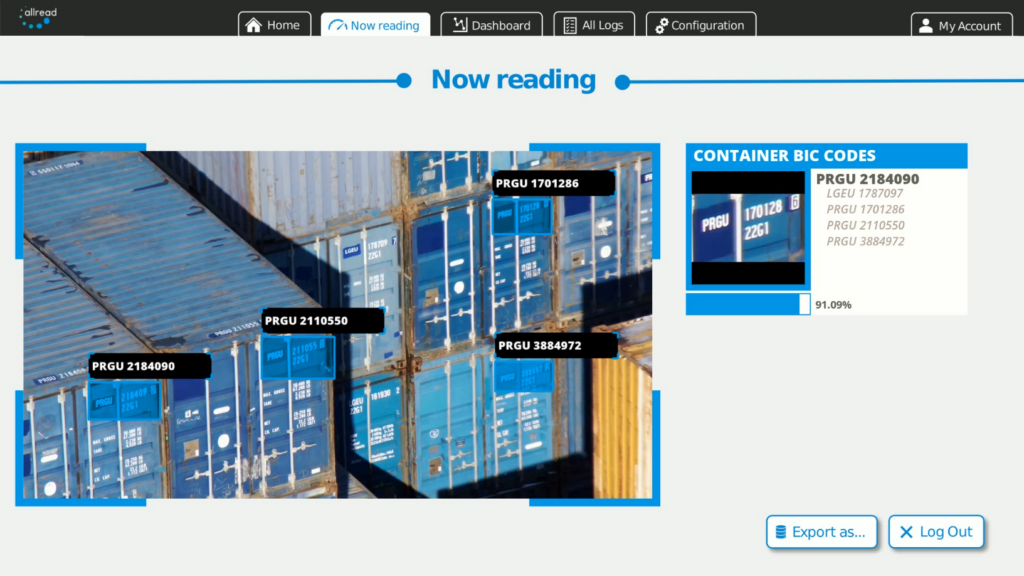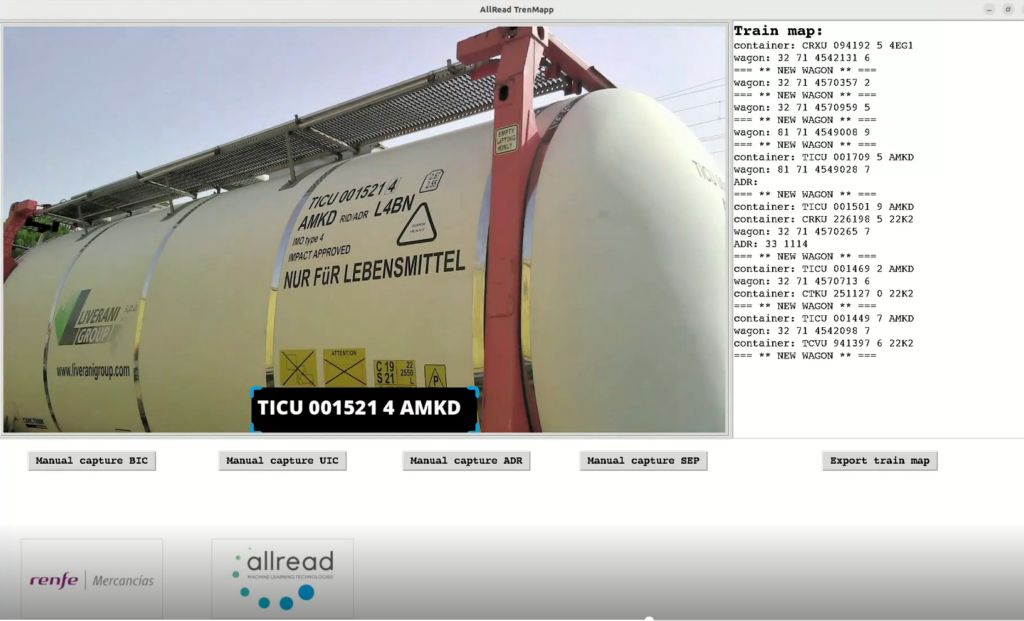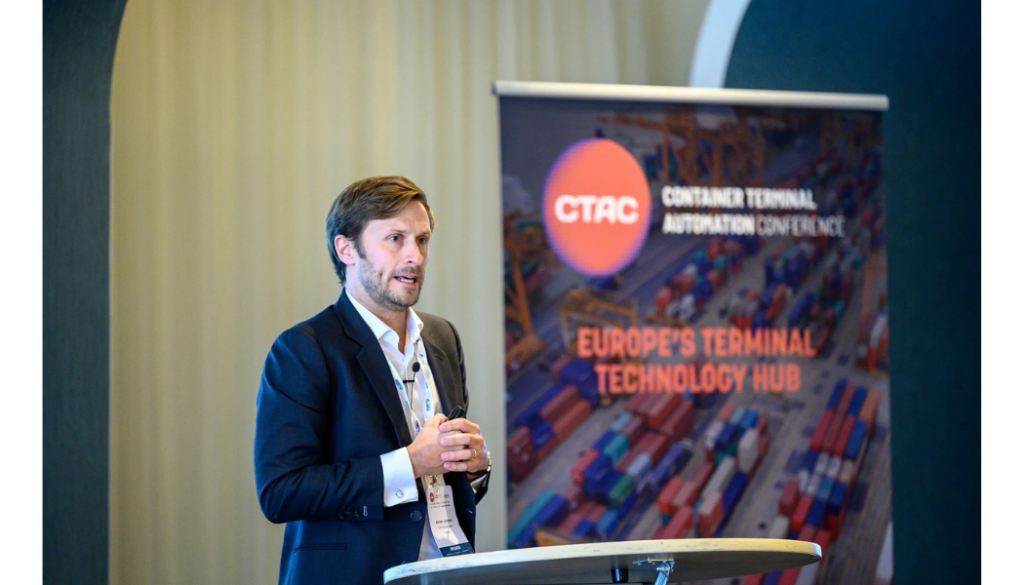
When it comes to digitalization, the intermodal industry lags behind other sectors; it’s similar to construction or even agriculture, which are themselves less digitalized. Applying artificial intelligence systems requires certain prerequisites, and one of them is digitalization. Without it, you can forget about artificial intelligence. You need servers, a network—in short, you need to have data. The sectors that are very advanced in this are banking, insurance, and finance, where there is a lot of personal data.
AI as a New Standard: From Differentiator to Everyday Tool
“It’s true that for the intermodal sector this is a challenge, but also an opportunity. Although some have taken a long time to digitalize and automate, when you arrive late, it’s possible to make great leaps. For example, China has done in 30 years what Europe did in 200,” illustrates Adriaan Landman, CCO & Co-founder of AllRead. He also likes to compare artificial intelligence to what the internet was 30 years ago, when people would say, “I work on the internet,” as a differentiator. “Today, that means nothing; it’s like saying, ‘I breathe.’ Now the internet is everywhere. It’s used for everything. Well, in a few years, the same will happen with artificial intelligence. Right now, people say, ‘I work with artificial intelligence,’ but tomorrow they won’t, because AI will be everywhere. It will be a service standard. Google Maps has been around for a long time, something very practical for traveling from one place to another. Nobody asks if there’s artificial intelligence behind it. It doesn’t matter,” he explains.
When AllRead started 6 years ago, it was one of the first to use artificial intelligence for port transport applications, which was very new and disruptive. And that was highlighted as a great added value. “Today, we mention it very little, because what matters is that our service helps, for example, with operational traceability. Particularly with railcars entering a port terminal,” Landman adds. Thus, smart management of trains reduces the need for manual intervention, offering more precise information, speed, efficiency, and control. “We have managed to improve a complex problem with something simple, which is part of our philosophy,” he says. In simple terms, the computer interprets images and transforms them into data. That’s what AllRead does, and it’s “simple, not costly, nor demanding in terms of installation times,” he notes.
Deep Learning Advantages Over Traditional OCR
When the company started with its value proposition, it noticed that other providers of traceability solutions for intermodal entry points were using OCR (optical character recognition), which has been around for 40 years. These solutions use very large gantries with multiple cameras, induction loops, and motion sensors. It was like selling hardware. The key with that equipment is to capture an image of a code to read it correctly. To do that, they need a perfect environment with good light, good speed, and a good angle. “With the artificial intelligence we have behind our system, we don’t need those optimal conditions, because we have trained our recognition models to handle poor conditions like dirt, damage, dust, movement, and light reflections, all of which are absolutely normal in the transport environment. So thanks to this technology, the hardware is not as necessary, making it much easier to install and, therefore, more economical,” Landman explains.
So, something that was once reserved for major ports like Singapore, Rotterdam, or Santos can suddenly be used to identify grain trains in a terminal or at ports like Bilbao or Liverpool, which don’t move millions of containers and don’t have as much money to invest. “It’s a product that is easy to install in a short time and with little investment. In a couple of months, the operator has a solution that works and provides value,” he adds.
An important point is that AllRead has essentially trained its neural networks. “In AI, you have deep learning and machine learning, where the most complex algorithms learn from feedback. You have container readings, which are global standards, but here there is a lot of specificity. For example, each terminal, like T6, might have its own process that no one else uses. And that’s a challenge for artificial intelligence, which runs on data. If you have to adapt your system for each terminal, it gets complicated because it has to ‘learn’ all the time. Having standard assets like a container, which is read the same way in Buenos Aires or Zanzibar, is very different from the railcars that arrive at T6. The innovative part is that we have managed to develop a specific solution for the terminal that allows the system to be retrained with very little real data. In a short time, we went from reading 8 out of 10 to 9.7 out of 10,” the entrepreneur explains.
Retrofit: Digitalizing Existing Infrastructure
This allows for targeted solutions, without having to wait for the entire railcar system to change someday—which is unlikely to happen anyway. “This is very important for the region, and it’s called ‘Retrofit’—a word we will be using more and more. In fact, we are digitalizing 30-year-old cranes; we install fiber optics and cameras, and suddenly they are smart cranes. This avoids having to invest millions of dollars in new equipment,” he adds. “It also helps meet the requirements of regulatory bodies in ports that lack extensive infrastructure or resources. Logically, they need a support system.” “That’s why one of our constant goals is to be affordable, both financially and technically, so that ports of all sizes can acquire cutting-edge solutions for greater transparency,” Landman notes.

The Challenge of Change: Overcoming Business Resistance
He acknowledges that technological changes must be driven by company decision-makers, who, in the transportation business, tend to slow these processes down. “When things are going badly, there’s no money to invest, and if everything is fine, why change?” This is often the argument from decision-makers, the specialist admits. This type of complex process also demands a strategic development plan, but the question is where to start. There’s a fear that if you change the technology, it will quickly become obsolete because it evolves so fast. “You have to take it step by step,” he says.
“The starting point, obviously, is to have fiber and connectivity, and to have a TOS (Terminal Operating System). A way to speed up decision-making is to make the cost of error as low as possible, with a pilot project that allows you to test, pull back, or move forward, letting people adapt to it gradually,” says Landman, who understands that a project like this must also be designed with people in mind. An innovation or IT manager is always listening to what’s happening in the market, because there are many new things and you have to constantly educate yourself.
The Key Role of Leadership in Innovation
For Landman, the idea is to expand into other segments of the terminal. “This is a starting point within the terminal and the company,” he notes. He highlights the role of Terminal 6’s CIO, Enrique Fiorenza, in this project, calling him an ambassador for innovation and digitalization at his company. Thanks to his initiative and leadership, he succeeded in incorporating the system and, most importantly, ensuring it gets used. Because often, things are installed and then never used. “In these cases, it’s good to bring people along with you, and you achieve that with small, concrete successes. They see that it works, and then they think, ‘let’s aim higher,’” he explains.
He adds that in the case of T6, it’s not a revolution; “it’s a specific project that solves a specific problem. But I am sure this will help the Terminal go far beyond just controlling these trains, elevating the team’s standards and ambition regarding the company’s digital culture,” he adds.
AllRead: Growth Driven by Trust
AllRead was founded in 2019 and began working with clients in Europe, in countries like Spain, Portugal, Italy, France, and Germany, and obviously later looking toward the Latin American continent as well. “We are a small company with a lot of drive and motivation, which stems from our clients who, in a way, are our ambassadors. This helps others dare to take the step. In that, trust is a key element,” Landman concludes.
